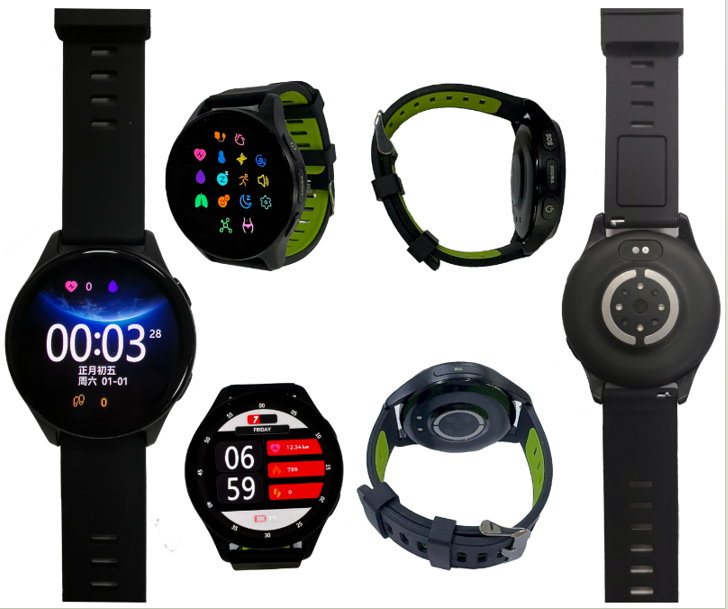Supply Chain Optimization for Smartwatch Brands 4g smartwatches
Discover how harnessing supply chain optimization can enhance competitiveness among smartwatch brands. Explore the latest in 4G smartwatches and smartwatch technology to stay ahead in the market.
10/20/20254 min read


Understanding Supply Chain Optimization
Supply chain optimization refers to the strategic management of a company's supply chain processes to enhance efficiency, reduce costs, and improve service levels. This optimization is a multifaceted approach that encompasses various key components, including inventory management, logistics, and supplier relationships. Effectively optimizing these components ensures that the right products are delivered to the right locations at the right time, thereby minimizing waste and maximizing profitability.
In today's rapidly evolving technology sector, particularly in industries such as wearable devices and smartwatches, supply chain optimization is critical. As consumer expectations rise and market dynamics become more complex, companies must be adept at quickly adapting their supply chain processes. Optimized supply chains enable organizations to respond swiftly to market demands, facilitate faster product launches, and ultimately enhance their competitive edge. Companies that leverage effective supply chain strategies can significantly improve their responsiveness to changes in consumer preferences and supply chain disruptions.
Several methodologies and technologies are used in the realm of supply chain optimization. For instance, businesses often employ Demand-Driven MRP (DDMRP), which helps align inventory levels with actual demand in a more responsive manner. Additionally, technologies such as advanced analytics, artificial intelligence (AI), and the Internet of Things (IoT) play an increasingly vital role in streamlining supply chain processes. These innovations allow brands to gain deeper insights into their operations, thereby improving decision-making and forecasting accuracy.
Moreover, fostering strong relationships with suppliers is a crucial aspect of optimization. Collaborating closely with suppliers can lead to better material quality, reduced lead times, and enhanced flexibility in meeting production needs. By integrating these elements into their supply chain strategies, smartwatch brands can achieve not only operational efficiency but also greater resilience against external challenges.
The Importance of Competitive Edge in the Smartwatch Market
The smartwatch market is continually evolving, driven by rapid technological advancements and shifting consumer preferences. Today, consumers are not merely seeking wearable devices; they are searching for innovative products that enhance their lifestyle, offer personalization, and integrate seamlessly with other smart technologies. As the demand for multifunctional and aesthetically pleasing devices rises, brands must establish a competitive edge to secure their position in this saturated market.
The intensity of competition among leading smartwatch brands has escalated, with notable players racing to carve out their own niche. Emerging trends such as health monitoring, fitness tracking, and mobile connectivity are not just features but expectations from savvy consumers. The ability to anticipate and meet these demands is critical for any brand aspiring to thrive. Competitors are adapting by introducing slicker interfaces, customizable design options, and enhanced user experiences. In this environment, agility and responsiveness to market changes become pivotal for sustaining relevance.
Moreover, innovation plays a central role in maintaining competitiveness. Brands that can infuse cutting-edge technology into their products, such as improved battery life, advanced biometrics, or AI integration, will have a distinct advantage. However, this comes with its own set of challenges, particularly in supply chain management. The complexity of sourcing materials, maintaining quality control, and ensuring timely delivery necessitates a finely tuned supply chain process. A well-optimized supply chain can not only reduce costs but also enhance the ability of brands to respond swiftly to market demands and competitive pressures.
Ultimately, the ability to adapt and innovate in reaction to consumer preferences and market trends is what sets successful smartwatch brands apart from their rivals. The intersection of competitive strategy and supply chain optimization serves as a critical element in navigating this dynamic landscape.
How Supply Chain Optimization Enhances Brand Competitiveness
In the evolving landscape of the smartwatch industry, supply chain optimization plays a critical role in enhancing a brand's competitiveness. By refining processes and utilizing advanced strategies, companies can significantly improve their market positioning. One of the primary methods involves implementing predictive analytics for demand forecasting. This approach enables brands to anticipate consumer needs and adjust their inventory accordingly, thereby minimizing excess stock and reducing costs. Companies can accurately gauge market trends and consumer behavior, leading to more informed decision-making and higher customer satisfaction.
Another essential strategy centers around enhancing supplier partnerships. Collaborating closely with suppliers not only ensures better quality and reliability but also fosters innovation. For instance, brands that engage in strategic partnerships can benefit from shared knowledge and resources, leading to improved product development timelines and reduced lead times. Furthermore, effective communication with suppliers enables brands to swiftly respond to market fluctuations, providing them with a competitive edge over those that operate with less synergistic relationships.
Utilizing technology to improve operational efficiency is also paramount in the optimization process. Firms can implement automation and data analytics tools to streamline their operations, allowing them to reduce costs and enhance productivity. For example, brands like Apple have successfully leveraged their supply chain networks and technological advancements, resulting in timely deliveries and superior product quality. This commitment to operational efficiency not only strengthens their market position but also reinforces customer loyalty, as consumers increasingly favor brands that can deliver high-quality products in a timely manner.
In conclusion, supply chain optimization presents numerous strategies that smartwatch brands can adopt to enhance their competitiveness. Through predictive analytics, improved supplier relationships, and the strategic use of technology, companies can significantly boost their market standing while ensuring they meet consumer demands effectively.
Future Trends in Supply Chain Management for Smartwatch Companies
The landscape of supply chain management is in a continuous state of evolution, shaped by technological advancements and shifting consumer preferences. For smartwatch brands, the integration of innovative technologies will be critical for maintaining a competitive edge. Artificial intelligence (AI) and machine learning (ML) are becoming essential tools in supply chain optimization. These technologies can analyze vast amounts of data to predict demand, streamline inventory management, and enhance decision-making processes. By utilizing AI and ML, smartwatch companies can mitigate risks associated with supply chain disruptions and adapt quickly to changing market conditions.
Another significant trend is the adoption of blockchain technology, which is poised to enhance transparency and traceability within supply chains. For smartwatch manufacturers, implementing blockchain can provide an immutable record of the materials used in products, ensuring compliance with ethical sourcing standards and boosting consumer trust. Furthermore, blockchain can facilitate the efficient tracking of items throughout the supply chain, reducing delays and inaccuracies.
Sustainable practices are rapidly gaining traction, as consumers become more environmentally conscious. Smartwatch brands must incorporate sustainability into their supply chain strategies, focusing on reducing waste, minimizing carbon footprints, and opting for recyclable materials. By embracing eco-friendly practices, companies can not only appeal to a broader customer base but also comply with increasingly stringent regulations regarding environmental impact.
To thrive in this dynamic environment, smartwatch companies need to remain adaptable and forward-thinking. This involves continuously monitoring industry trends, investing in innovative technologies, and aligning their supply chain strategies with long-term goals. The ability to swiftly respond to potential disruptions, from geopolitical shifts to supply shortages, will be critical for maintaining market relevance and seizing new opportunities as they arise.
